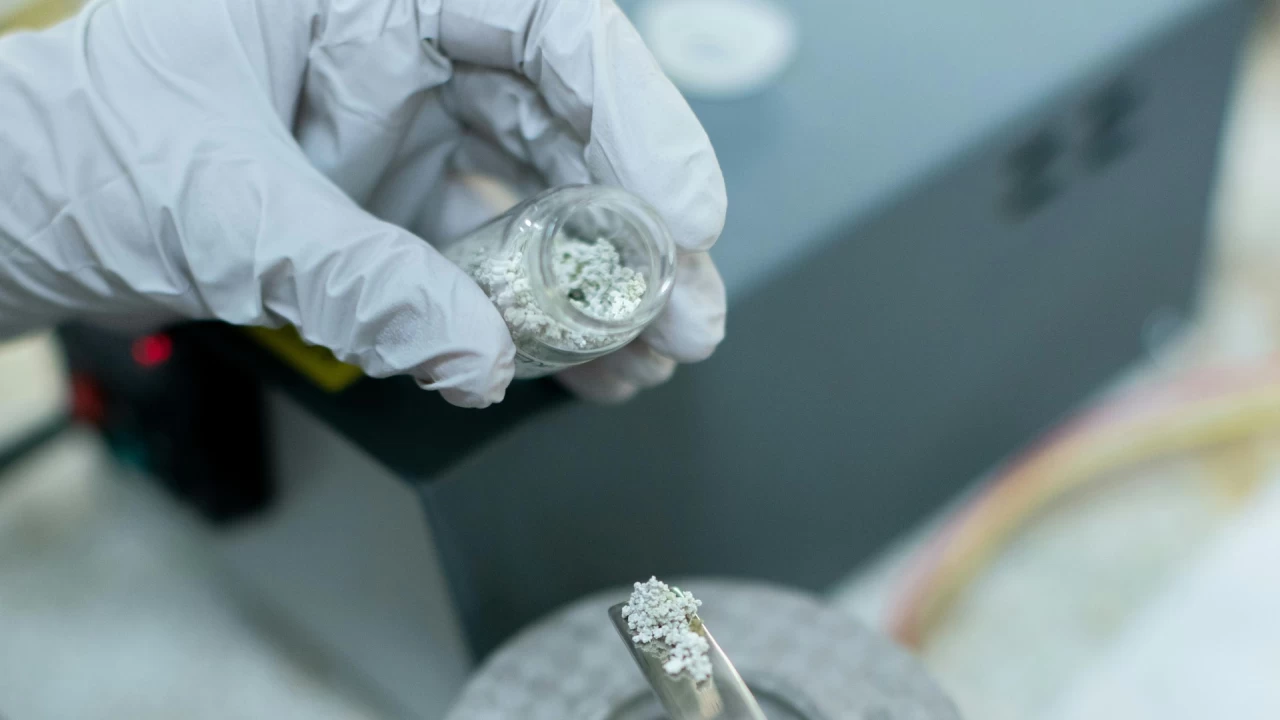
A research group at the Daegu Gyeongbuk Institute of Science and Technology (DGIST), led by Professor Su-Il In, has developed a new type of nuclear battery called a perovskite betavoltaic cell (PBC), which could power small devices for decades without the need for recharging. The team used carbon-14—an unstable form of carbon known as radiocarbon—and combined it with perovskite materials to create a hybrid battery with improved energy conversion and long-term stability.
The new battery uses radioactive carbon-14 nanoparticles and quantum dots (14CNP/CQD) as electrodes. These were embedded into the device along with a perovskite film treated with dual chlorine-based additives: methylammonium chloride (MACl) and cesium chloride (CsCl). These additives helped strengthen the crystal structure of the perovskite, making it more stable and better at moving electric charges. Compared to older designs, the team recorded a roughly 56,000-fold improvement in electron mobility and a maximum continuous operation of nine hours during testing.
“This study represents the first successful integration of perovskite into a betavoltaic cell, pioneering perovskite betavoltaic cells,” the researchers stated.
Betavoltaic cells work by turning beta particles—emitted during radioactive decay—into electricity. Since beta rays can’t penetrate human skin and can be blocked by materials like aluminum, the technology is considered biologically safe. Professor In explained, “I decided to use a radioactive isotope of carbon because it generates only beta rays.” Carbon-14 is also a by-product from nuclear reactors, making it cheap, widely available, and recyclable. Because it breaks down very slowly, it could power devices for hundreds or even thousands of years.
To raise energy conversion efficiency—the measure of how well a battery turns electrons into usable power—the team turned to a titanium dioxide semiconductor, often found in solar cells, and enhanced it with a ruthenium-based dye. The bond between the dye and titanium dioxide was made stronger through a citric acid treatment. When beta rays from radiocarbon hit the dye, they triggered a chain of electron reactions known as an avalanche. These electrons were then captured by the titanium dioxide and sent through a circuit to generate electric current.
The battery was also designed with radiocarbon in both the anode and cathode, increasing the amount of beta radiation and reducing energy loss over distance. This approach helped boost its energy conversion efficiency from 0.48% in older models to 2.86%.
Still, the system only converts a small portion of radioactive energy into electricity, meaning its output remains lower than standard lithium-ion batteries. Professor In suggests improving the shape of the beta emitter and finding better absorbers could further raise power output.
“This research marks the world’s first demonstration of the practical viability of betavoltaic cells,” said In. “We plan to accelerate commercialization of next-generation power supply technologies for extreme environments and pursue further miniaturization and technology transfer.”
Doctoral student Junho Lee added, “Although this research involves daily challenges that often seem impossible, we are driven by a strong sense of mission, knowing that the future of our nation is closely tied to energy security.”
The team believes that, with further development, these radiocarbon-powered batteries could be used in areas ranging from pacemakers to space probes and drones. As In puts it, “We can put safe nuclear energy into devices the size of a finger.”
Source: DGIST, American Chemical Society, Royal Society of Chemistry
This article was generated with some help from AI and reviewed by an editor. Under Section 107 of the Copyright Act 1976, this material is used for the purpose of news reporting. Fair use is a use permitted by copyright statute that might otherwise be infringing.